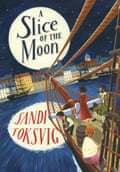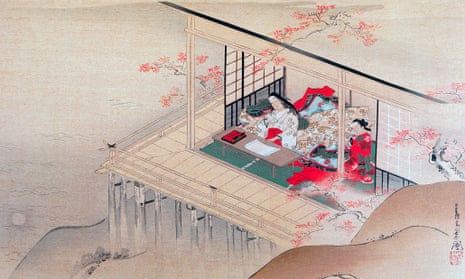1. Murasaki Shikibu (c973 or 978 – c1014 or 1031)
The trouble with a lot of women in history is that we just don’t know that much about them. I would love to have met Murasaki Shikibu but she would have been tricky to find as this was not even her real name. She was born in Japan at a time when women were neither educated to write nor were their names recorded for posterity. In English she is referred to as Lady Murasaki and what we do know is that she wrote if not the world’s first novel then certainly the first novel that is still considered a classic. She learnt classical Chinese by listening to her brother’s lessons and wrote in her diary how often her father regretted that she was not a boy. Murasaki’s book The Tale of Genji was written after the death of her husband. It became so popular that she was asked to serve as a lady-in-waiting to the Empress. Sadly, she found court life dull but it gave her plenty to write about.
2. Catherine Littlefield Greene (1755-1814)
A lot of what we think of as history is actually just a version of events which may or may not be true. As a child growing up in the US I was taught that a man called Eli Whitney changed the face of the American economy with the invention in 1793 of the ‘cotton gin’. When cotton is picked the fibres have to be separated from the seed. This was originally done by hand. It took one man ten hours to separate a single pound of fibre but the cotton gin was a machine which could make 50 pounds in the same time. When Catherine’s husband died she had to run their cotton farm. She hired Eli Whitney to teach her children. Within a year he was said to have invented the cotton gin but others say it was Catherine. She thought of it but no woman was allowed to claim such an invention.
3. Agnes, Countess of Dunbar and March (c1312–1369)
The Countess was known as Black Agnes because she had dark hair and eyes but I think anyone who got on the wrong side of her might have thought it was a black day indeed. Agnes and her husband, Patrick Dunbar, were Scottish and lived in a huge castle in Dunbar in East Lothian. On 13 January 1338, Patrick was away fighting the English when the castle was attacked. Agnes had a few servants and a couple of guards with her but she would not surrender. For nearly five months she and her small band held off the enemy. When the English hurled rocks against the ramparts with a catapult Lady Agnes led her maids in their best clothes to the outer walls where they dusted away the damage. The castle was never surrendered.
4. Princess Khutulun (c1251 - ?)
We know a great deal about a great many great men but not so much about the women in their lives. We may well have heard of the great Mongol leader, Kublai Khan, grandson of Genghis Khan and at one time ruler of a great swathe of what is today Mongolia, China and Korea. We may not have heard of Kublai’s niece, Princess Khutulun, who was described by Marco Polo as the greatest warrior in Khan’s army. She made her uncle a bet that she would marry any man who could wrestle her and win. If however, they lost they had to give her 100 horses. She got 10,000 horses that way.
5. Edmonia Lewis (1843 – c1900)
There is a wonderful painting from about 1440 of a woman sculptor chiselling away at a massive stone work. Women sculptors are a rare find in history and Edmonia was one of the rarest. She was the first black woman to be recognised as making a living from carving stone. She had a difficult life. At college she was accused of trying to poison two white students. Although she was proved innocent she was not allowed to graduate.
6. Jerrie Cobb (1931 - )
If you are interested in space exploration then you may well have heard the name John Glenn. In 1962 he became the first American to orbit the earth. Jerrie Cobb, had also been chosen for the US astronaut programme. She had been flying since she was 12. She had twice as many flight hours to her name as John Glenn. She held world records for speed, distance and altitude. She failed to go into space because she hadn’t gone through jet-aircraft testing. She hadn’t because women weren’t allowed to until 1973. When the matter came before Congress the man who testified that women shouldn’t be allowed in space was John Glenn.
7. Agnodike (4th century BC)
Athenian women were not allowed to be doctors so Agnodike disguised herself as a man to study medicine. When she had finished she tried to treat women but they refused to have her as their doctor because they thought she was a man. When she revealed her true sex she was arrested but the women she had treated protested and eventually the law against female medics was changed.
8. Enheduanna (c2285-2250 BC)
Probably a princess. Certainly the world’s first known author, male or female. She wrote hymns to the gods in cuneiform.
9. Queen Vishpla (somewhere between 3500 and 1800 BC)
Again, it’s hard to find out that much about her but there is an ancient sacred poem of India called the Rig-veda which was written – well again, no one is sure, but at least 3,000 years ago or more. In it there is the story of Queen Vishpla who leads her troops into battle and lost a leg. Instead of giving up she had an iron leg fitted and returned to war. She is the first person known to have a prosthesis and represents a story of triumph over adversity.
10. Bessie Colman (1892 –1926)

The first African-American to hold an international pilot license and the first female African American aviator. The tenth of thirteen children in a very poor family, Bessie walked four miles a day to go to school. She tried to go to college but had no money. In 1916 she got a job as a manicurist in a Chicago barber shop and heard tales of pilots back from the first world war. She decided to learn to fly but no one would teach her because she was black and a woman. She took French lessons and got herself to Paris where she learnt to fly. She became a media sensation as a stunt flyer but died in a plane crash when her mechanic left a wrench in the plane which slid into the gearbox and jammed it. She was 34.
Sandi Toksvig was born in Copenhagen, Denmark and brought up around the world in Europe, Africa and the United States. She is well known for her television and radio work, as a presenter, writer and actor. She has written more than 20 fiction and non-fiction books for both children and adults. Her latest book A Slice of the Moon, an action packed story of one family’s journey across the world as they leave behind their home in Ireland during the potato famine and travel to America is out now. Find out more about Sandi at sanditoksvig.com.
